Eucla and the Telegraph Office.
- Australia 1901-1988
- New South Wales
- Queensland
- South Australia
- Tasmania
- Victoria
- Western Australia
- International
- Special aspects
The Eucla Telegraph Station is remembered through the following sections:
- the construction of the line from Albany east to Eucla;
- the location of the Eucla Telegraph Station;
- the buildings at the Telegraph Station;
- the inside room of the Station;
- the staff and the families at the Telegraph Station;
- aspects of life outside the Telegraph Office;
- features in the area surrounding the Telegraph Station.
2. Location of the Eucla Telegraph Station.
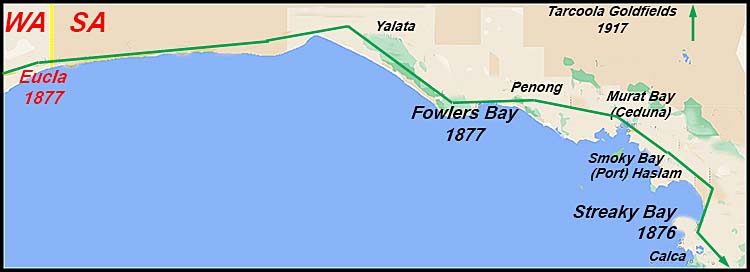 |
| Eucla is 4-5 miles on the western side of the Western Australia - South Australia border.
For those who have not been there for some time, it is important to reiterate that Eucla is at the centre of everything (as the signpost indicates). The Telegraph Station opened on 8 December 1877. Its status changed to a Post & Telegraph Office in 1895. No special date stamp has been recorded for use with telegrams at Eucla.
|
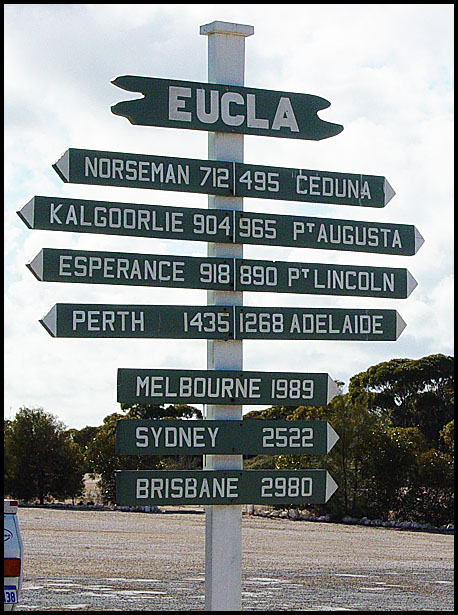 A picture is worth 1,000 words. |
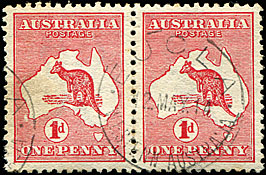 Usual postal date stamp. 12 May 1913. |
3. The buildings of the Telegraph Office.
The Eucla Telegraph Station was the largest station on the 1877 East-West Telegraph line It acted as a transfer point for telegraphic messages between South Australia and Western Australia from 1896 to 1905 at which time the operations were amalgamated under the Western Australian Post and Telegraph Department.
The weatherboard station erected at Eucla in 1876 served its purpose for twenty years.Then, to meet the needs of the enlarged staff and equipment due to the gold discoveries and increasing trade, a fine stone building together with separate stone quarters were built at a cost of about £6000.
A substantial jetty, running out into five fathoms of water, was completed in 1887, by Contractor Wishart, under the direction of Public Works Superintendent Fairgrieve.
The West Australian of 2 September 1896 reported on aspects of the construction of the new 1896 intercolonial line from Coolgardie via Dundas and Ponton's to Eyre and Eucla. In part, the article also described the visits to the other stations during the upgrading work conducted by Mr. G. P. Stevens, the Chief Electrician of the W.A. Telegraph Department:
"I left Israelite on the 14th July by the s.s. Macgregor, touching at Eyre on the 15th, and arriving at Eucla on the 16th. Here the want of space in which to transact the immensely increased business between the colonies is painfully in evidence. Every available corner in the present building is occupied and officers are sadly cramped at their work and subjected to tho unpleasant gases given off by the batteries, three or four hundred cells of which are of necessity set up in the operating room.
The question of where to put the additional instruments and batteries required for quadruplexing our side was by no means easily solved but, as all hands (including the South Australian staff) submitted to a little extra squeezing, the instrument tables were re-arranged and temporary extensions made to enable me to connect the No. 2 portions of the set.
Unfortunately the weather was extremely rough along the coast during the week I remained at Eucla and the first trials of through working from Perth to Eucla were not so satisfactory as I had hoped to report. Nevertheless we were able to work triplex (or receive two messages and send one) for a few hours on several occasions and, where this is possible, it is only a matter of adjustment and attention to details to make quadruplexing successful".
"Concerning the erection of the new Eucla Telegraph Station, Mr. M. E. Jull, the Under-Secretary for Works, has received a report from the Superintendent of Public Buildings to the effect that the work has been executed in a satisfactory manner. The contract price was £6,334 16s. 9d., and extras were decided upon to the extent of £210 17s. 6d., bringing the total cost up to £6,545 14s. 3d. The contract was accepted on October l8 last year and handed over to Mr. Stevens, the manager of the Telegraph Department, as completed on March 21 last. The undertaking occupied 22 weeks longer than the time stipulated in the contract, so that the amount which had to be forfeited by the contractor as penalties at the rate of £7 per week was £154. It was pointed out in the Report that the principal cause of the delay, as stated by the contractor, was his inability to get a steamer to convey material for the work from Fremantle. In the same Report the Superintendent also stated that the repairs commenced some little time ago in connection with the old Eucla Telegraph Station had been completed at a cost of £391 2s. 4d, and that the additions to what was mentioned as the "Third Old Station" had been finished at a cost of £399 16s. l0d. The officers of the Telegraph Department stationed at Eucla, the Report concluded, were greatly pleased with the increased accommodation provided".
In 1898 South Australia maintained a Stationmaster, 11 operators and one linesman at Eucla. In addition, the Government electrician (Mr. Unbehaun) was dispatched to Eucla to superintend the removal of the instruments to the new Office.
A quadruplex instrument was placed by Todd on the Adelaide line via Yardea to Eucla with automatic quadruplex repeaters at Yardea. The line via Port Lincoln was still duplex.
A really wonderful first hand account of Eucla and life at the station is provided by Frederick G. Simmons in the Adelaide Mail of 4 August 1945.
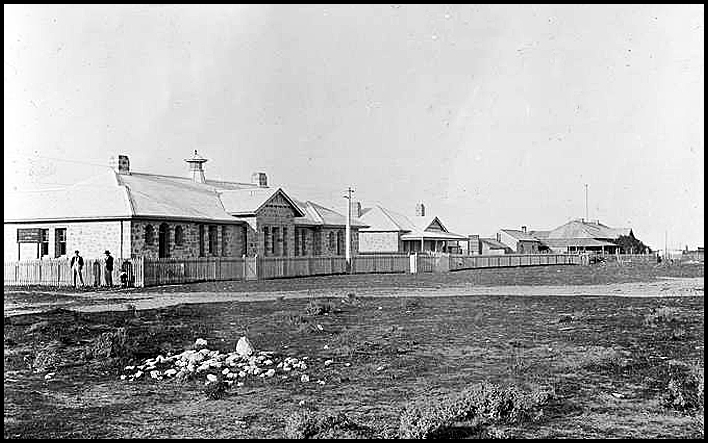 The Eucla Telegraph station and other buildings 1905. Source: Museum of South Australia B54057_5. |
|
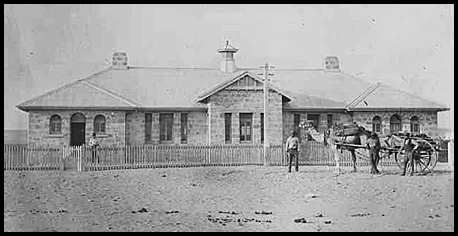 The Eucla Telegraph Station about 1905. Source: Museum of South Australia B54057-1. |
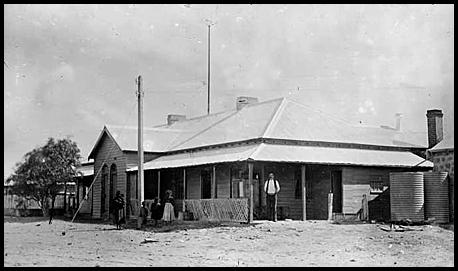 The Registrars Office at the Telegraph Station 1902. Source: Museum of South Australia B54057. |
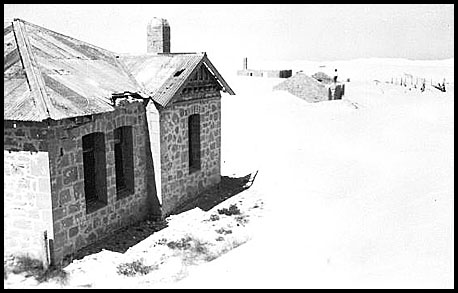 The Eucla Telegraph Station about 1956. |
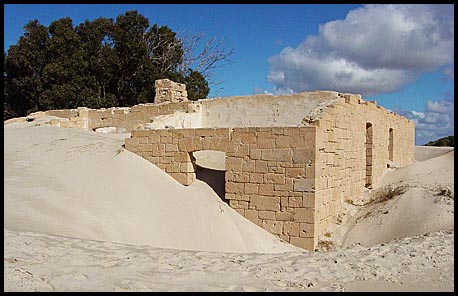 The Telegraph Station about 1980 - overcome by sand dunes. Photograph by Yewenyi. |
4. Inside the telegraph station.
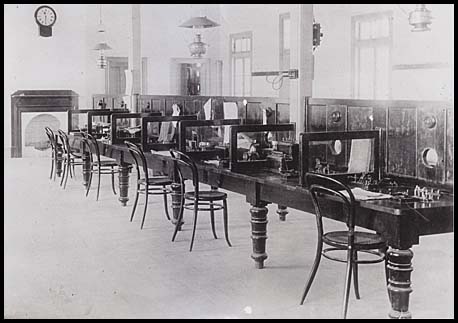 Inside the Telegraph Office - dividing partition down the middle of the desks so that Western Australian operators sat on the western side and the South Australian operators sat on the eastern side. The holes in the dividing partition enabled the operators of one Colony to pass messages to those from the other Colony for retransmission. Inside the Telegraph Office - dividing partition down the middle of the desks so that Western Australian operators sat on the western side and the South Australian operators sat on the eastern side. The holes in the dividing partition enabled the operators of one Colony to pass messages to those from the other Colony for retransmission.
Provenence: Gundersen, Johnstone. |
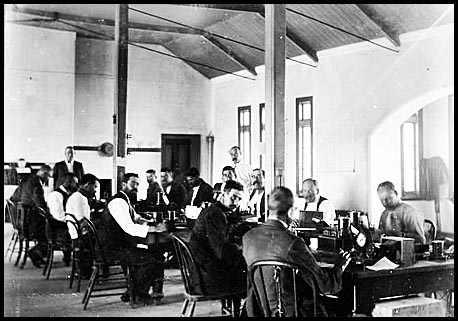 Inside the Telegraph Office - dividing wall taken down after the realisation of the room having the same time zone. Source: National Library of South Australia B54060-12. |
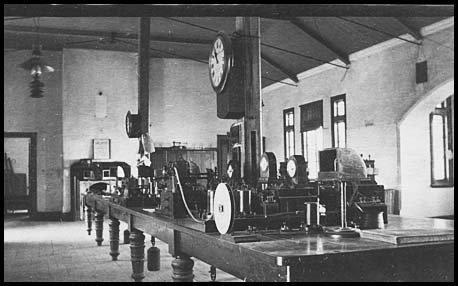 The operating room housed three sets of automated repeaters. The operating room housed three sets of automated repeaters.The large roll of paper tape for recording messages for one machine can be seen under the clock. Provenance: Johnstone. |
|
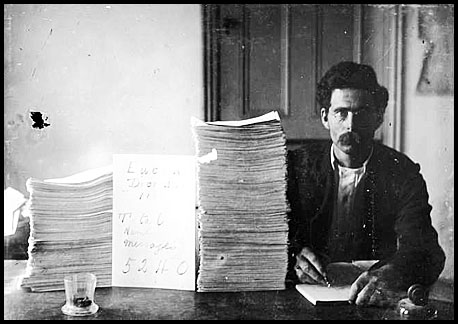 Staff member (probably Albert Lionel Clayer) with a sign next to him summarising the messages. The sign reads: "EUCLA direct SA 1905 T to C Number of messages 5,240. Source: Library of South Australia B54060-13. |
The operation of the station between officers from each Colony was called into question by the Adelaide Chronicle of 28 December 1895:
"All the messages to and from the east have to be repeated at Eucla.
Now at Wagga and Deniliquin, two important repeating stations, all messages are repeated by means of automatic repeaters. The codes in this colony and the other colonies being different, it struck me that there must of necessity be some delay at Eucla and, on making enquiries from one of the officials here, I was informed that every message reaching Eucla from this side has to be there written out and handed into the South Australian office and retelegraphed. Of course the same procedure has to be followed with all messages coming from the east. As far as I am aware, this leakage has never been made public, and it most certainly must be largely responsible for the delays that are so constantly taking place.
Why this colony does not assimilate its system with that of the other colonies I cannot understand, but I am informed they are adamant on the subject. The mistakes made in the telegrams are simply appalling and, considering the blunders made in ordinary everyday telegrams, I cannot for the life of me understand how code messages can ever be made out. I read a severe indictment the other day of the local telegraphic system from the manager of the Eastern Extension Telegraph Company, but no notice seems to have been paid to it by the local authorities".
5. The staff and their families.
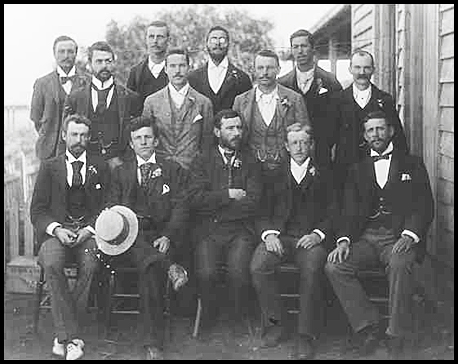 The staff at the Telegraph Office in 1898. Source: National Library of South Australia B35784. |
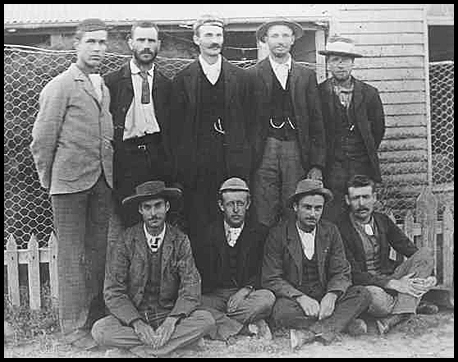 The South Australian staff at the Telegraph Office in 1905. Source: National Library of South Australia B35782. |
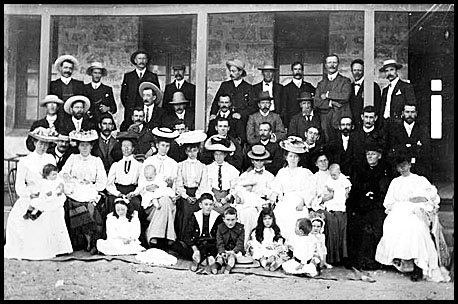 Residents of the Eucla Telegraph Office in 1905. Source: State Library of South Australia B54060-8. |
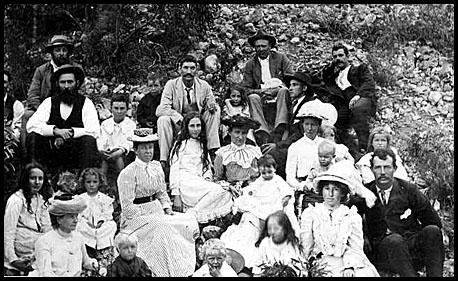 Telegraph Office families picnicing near Eucla in 1905. Source: State Library of South Australia B54060-33. |
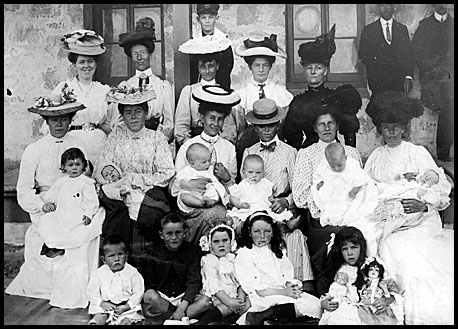 Women and children at Eucla. Source: State Library of South Australia B54060-27. |
|
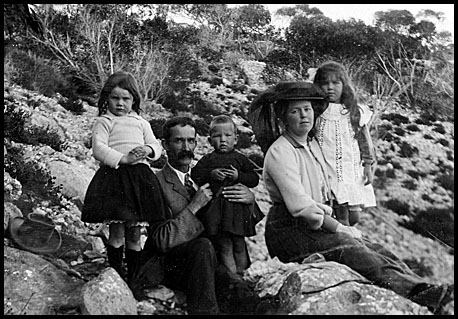 A family picnic. Source: State Library of South Australia B54060-29. |
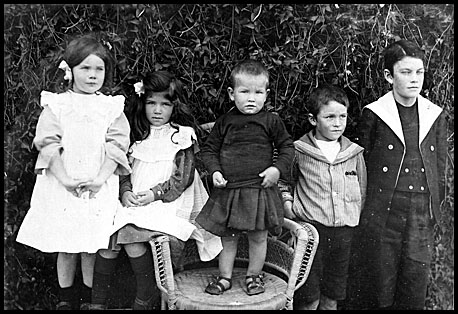 The Groper family in Eucla about 1905. Source: State Library of South Australia B54060-26. |
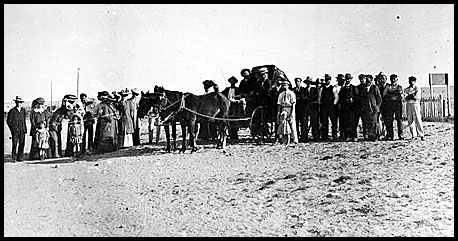 A family setting out for Adelaide. Source: State Library of South Australia B54060-63. |
Personnel: See Eucla entry for WA-SA Telegraph Offices elsewhere to place the story in the context it deserves :-) |
6. Aspects of life outside the Telegraph Office.
An amazing account of the environment around the Eucla Telegraph Station is contained in the 1 April 1899 edition of the Albany Advertiser.
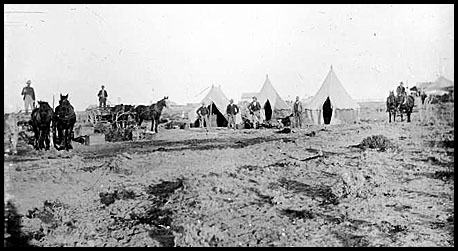 South Australian workers at a camp on the outskirts of Eucla. Source: State Library of South Australia B54060-11. |
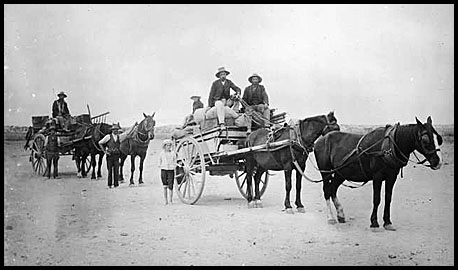 South Australian line workers moving camp. Source: State Library of South Australia B54060 - 10. |
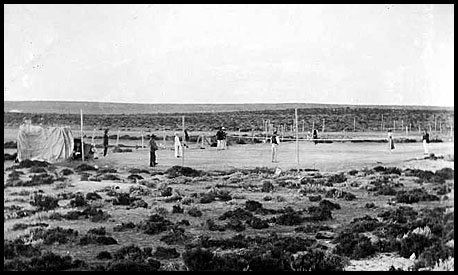 The Eucla tennis courts. Source: State Library of South Australia B54060-60. |
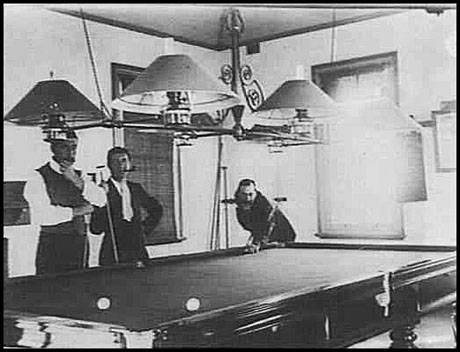 Staff billiards about 1907. Source: State Library of South Australia - B49181. |
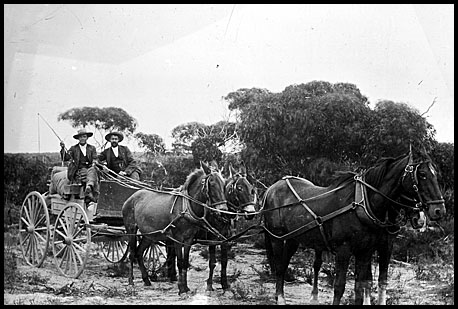 Mail being sent to Fowlers Bay in South Australia. Source: State Library of South Australia B54060-15. |
|
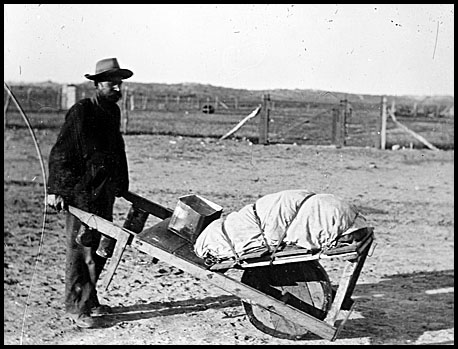 A swagman with his barrow and possessions passing by Eucla on his journey through the desert. Source: State Library of South Australia B54060-40. |
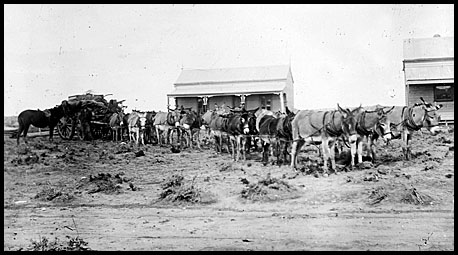 A large donkey train pulling a wagon and passing through Eucla. Source: State Library of South Australia B54060-24. |
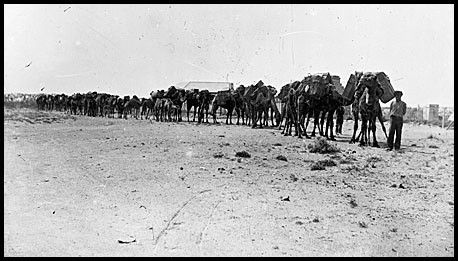 A large camel supply team arriving at Eucla about 1905. Source: State Library of South Australia B54060-22. |
Sometimes the staff of the Telegraph Office would just go for a ride around the area. Soon after the Eyre Telegraph Office had opened, the first Telegraph Master at the station - Mr. William Graham - was riding around on his horse one afternoon when he discovered the body of Mr. Baxter who had been the companion on Edward John Eyre's expedition from Adelaide to Albany in 1841. As noted eleswhere, Baxter had been killed in his sleep by two South Australian indigenous members of the expedition. Mr. Baxter's remains had been undisturbed on Culver Heights until found by Mr. Graham in 1877. They were "surrounded by the buckles of the deceased explorer's rug, his pannikin and his pocket knife. These Mr. Graham put into a box and despatched to Mr. Eyre at Jamaica, where he then filled the position of Governor, after having served as Lieutenant-Governor of New Zealand. Over Mr. Baxter's remains, a monument stands in the Jamaica cemetery" (Kalgoorlie Miner 28 May 1925).
In October 1900, Mr. Hillman - one of the SA operators at Eucla - was out relaxing with two friends when he shot two grey rabbits for dinner. His account confirms the significant threat of the increasing numbers and the haste they are making towards the Goldfields.
Note that in some of the pictures above, taken outside, there is an absence of vegetation. This lack was due entirely ti the increasing number of rabbits.
Features in the area surrounding the Telegraph Station.
The monument at Eucla erected in July 1958. Erected C. W. Davidson, Postmaster General The establishment of the |
 |
Thanks to the State Library of South Australia for assembling a 101 photograph collection and making it available to the public on the internet in an easy-to-access format.
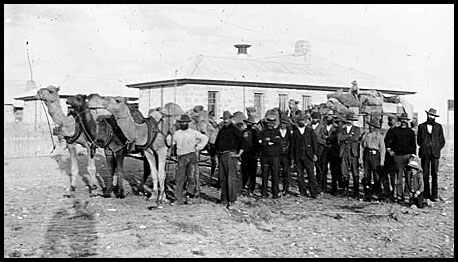
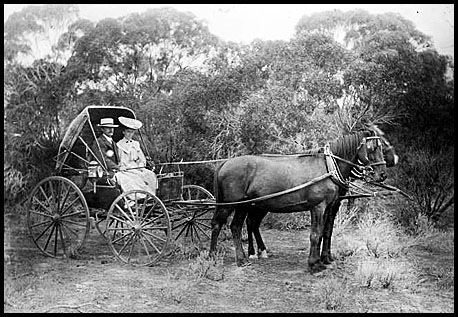
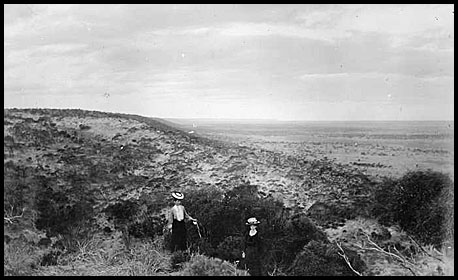
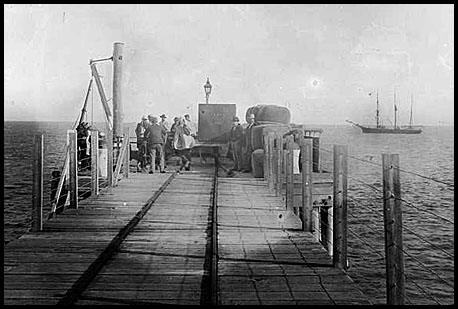
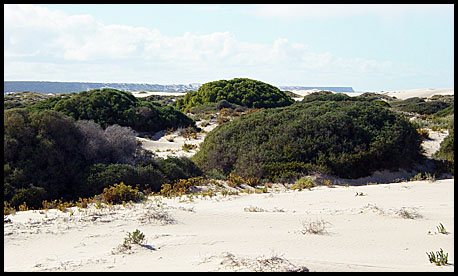
.jpg) Wilson's Bluff on the South Australia-Western Australia border and looking towards South Australia.
Wilson's Bluff on the South Australia-Western Australia border and looking towards South Australia.